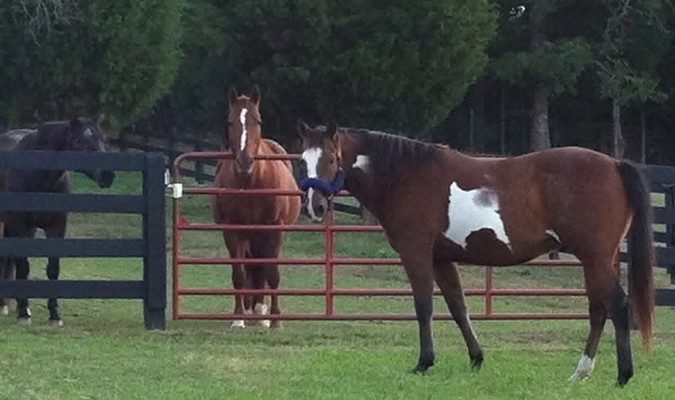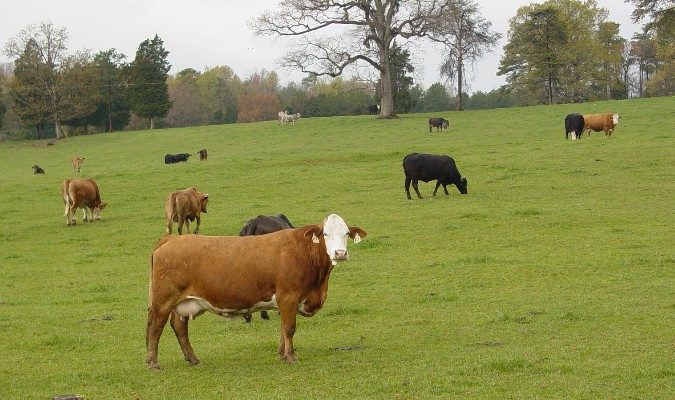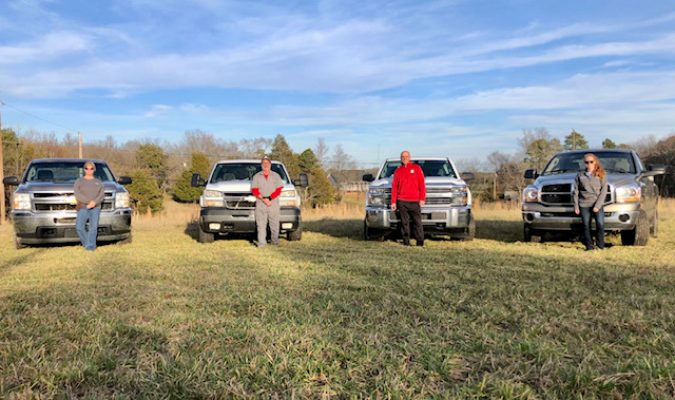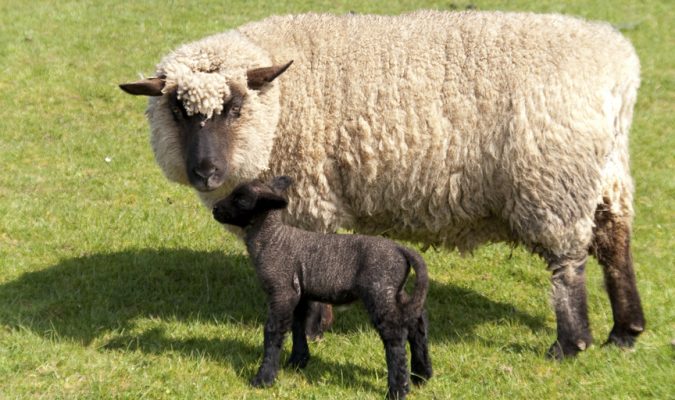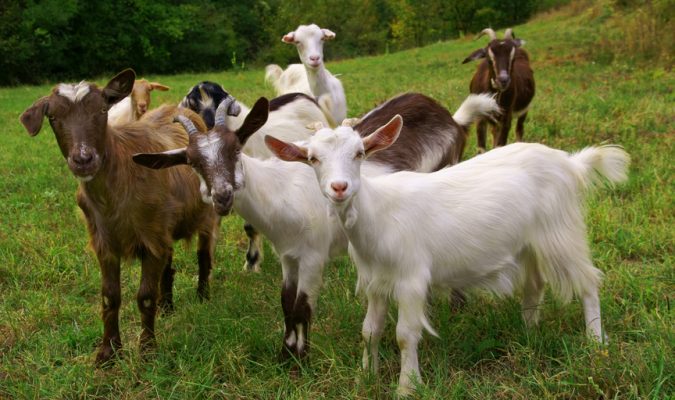Equine Vaccination Basics
This newsletter was put together to answer some common vaccine questions that clients ask during annual wellness exams for their horse. We will discuss the basics of vaccines, the importance of vaccinations, adverse reactions, and help decide what you should vaccinate for. It may not answer all of your questions, so if you have any other thoughts regarding vaccines for your horse you’d like to discuss then please call the office!
Basics of How Vaccines Work:
- The vaccine contains proteins or components of a weakened or inactive pathogen that are injected into the horse with substances to trigger an immune response.
- The horse’s immune system then recognizes the vaccine as a foreign intruder. This triggers an immune response to get rid of the foreign product allowing for antibody production and immune system cell activation.
- Then a number of the activated immune system cells, known as memory cells, remember the specific antigen associated with the disease allowing the immune system to rapidly respond and produce antibodies if it encounters the pathogen again in the future.
Basic Vaccine Types: There are numerous different types of vaccines on the market, but to keep things simple I’ve separated them into a killed versus modified live categories.
- Killed/Inactivated Vaccines: The pathogens in this type of vaccine are killed through heat or chemicals to eliminate risk of causing disease. When injected with the killed vaccine, the proteins or components of the pathogen are presented to the horse’s immune system to generate an antibody response.
- Modified Live Vaccines: The pathogens in this type of vaccine have had their virulence reduced but not completely eliminated meaning they still have the potential to reproduce. This allows for a stronger and longer lasting immunity for the horse similar to a true infection, and there is the uncommon potential for the pathogen to cause disease in immunocompromised animals.
Importance of Herd Immunity: With any population of species, the more animals that are vaccinated for a specific infectious disease makes it harder for that disease to spread, even to unvaccinated animals. The magic percentage of vaccinated animals in order to achieve herd immunity is roughly 75% (preferably 80-90%) of the total population in order to lessen the number of clinically infected animals.
Essential or Core Vaccines
This category includes vaccines that protect horses from diseases that are endemic to a region, have potential for severe disease to the horse, pose a public health risk, and are highly infectious amongst horses. All of these diseases listed have no real treatment strategy once clinical signs develop making prevention the best strategy. These vaccines should be given to horses of all sizes along with donkeys on an annual basis no matter the age or lifestyle. Below is the list of diseases that the American Association of Equine Practitioners developed to protect horses against these devastating diseases through vaccination.
- Tetanus: This is a bacterial disease caused by Clostridium tetani, which is ubiquitous in the environment. If a horse were to have a cut and this bacteria entered the lesion it could cause severe muscle rigidity throughout the body due to the neurotoxin produced by the bacteria. Once a horse develops clinical signs of tetanus it is very difficult to treat and a large majority of these horses have to be euthanized.
- Rabies: This is the infamous viral disease spread animal to animal that can affect relatively all mammals including humans. Horses infected with rabies have the potential to infect humans as well. In horses this disease can cause a wide range of neurologic signs once a horse is infected, and death rates with this disease are 100%.
- West Nile Virus (WNV): This is a viral disease spread by mosquitos from infected birds that causes inflammation of the brain, fever, and a range of neurologic signs. Death due to WNV is ~30%, and a large portion of those that survive still have neurologic deficits for the rest of their life.
- Eastern Equine Encephalomyelitis (EEE): This is a viral disease spread from birds to horses via mosquitos that causes inflammation of the brain, fever, and neurologic deficits. Mortality associated with EEE is very high, with conservative reports stating ~75% of horses infected don’t make it.
- Western Equine Encephalomyelitis (WEE): This viral disease is one of the siblings to EEE, and it too is spread by mosquitos that pickup the virus from infected birds. WEE also causes inflammation of the brain, fever, and various neurologic deficits. Mortality rates of this disease are similar to WNV (~30%), and like West Nile Virus the horses that survive still have neurologic deficits for the remainder of their life.
Risk Based Vaccines
This category includes vaccines that are given along with the baseline core vaccinations to protect horses with certain lifestyles or horses that live in certain regions of the country where some of these diseases are more of an issue. The decision to start using one of these vaccines on your horse should always be made alongside your attending veterinarian who can help determine if the vaccine is warranted for your situation.
- Equine Influenza Virus (EIV): This is a highly contagious viral respiratory disease that commonly affects horses traveling and comingling with other horses.
- Equine Herpesvirus (Rhinopneumonitis): This is another contagious viral respiratory disease that commonly affects traveling horses exposed to other horses. It differs from EIV in that not only does it cause respiratory disease, but it also has the potential to cause abortion in a mare or neurologic disease in naïve horses.
- Strangles: This is a bacterial respiratory disease caused by Streptococcus equi subspecies equi which is highly contagious amongst horses and is spread through direct contact of nasal secretions. Young horses (< 5 years old) are at most risk and affected horses can have very high fevers along with the characteristic swelling of lymph nodes behind the jaw.
- Botulism: This is bacterial disease caused by Clostridium botulinum which produces a neurotoxin like tetanus, but unlike tetanus, botulism causes diffuse muscle weakness and eventual paralysis.
- Leptospirosis: This is a bacterial disease that has the potential to causes uveitis (eye inflammation), kidney failure, abortion, and placental infection in utero. Wildlife hosts shed the bacteria through their urine allowing contamination of the environment.
- Equine Viral Arteritis (EVA): This is a viral reproductive disease that has the potential to cause abortion in mares along with establishing a chronic carrier state in stallions.
- Potomac Horse Fever (PHF): This is a bacterial disease caused by Neorickettsia risticii that affects horses in the eastern United States along the Potomac River from spring to fall. Signs of disease include fever, diarrhea, laminitis, colic, and abortion in pregnant mares.
- Rotaviral Diarrhea: This is a viral disease that affects foals less than 6 months of age, typically on larger foaling operations.
- Anthrax: This is a bacterial disease caused by Bacillus anthracis where the horse is infected through insect bite, inhalation, or laceration in the environment of contaminated soil. This disease causes sudden death in horses and has the potential to transmit disease to humans. This is a region dependent disease that affects western and midwestern regions of America.
- Snake Bite: This vaccine was developed to protect horses at a greater exposure to the western diamondback rattlesnake, along with supposed cross protection against other common rattlesnakes in the United States.
- Venezuelan Equine Encephalomyelitis (VEE): This is the third of the viral encephalitis diseases that afflict horses. It causes the same clinical signs as the eastern and western diseases, but hence the name it is typically only seen below the border of the United States.
Final Thoughts
Vaccine Effectiveness: Certain lifestyles and underlying health at the time of vaccination can affect how the individual responds to the vaccine and how long they’ll be protected if exposed to the pathogen at a greater frequency/amount than other horses. Therefore, vaccines should not be thought of as a 100% protection against disease. They do not guarantee complete immunity to a disease, but they do greatly reduce the danger of the disease and how severe it is if the horse contracts it.
Vaccine Reactions: With the astronomical number of horses that receive vaccines, there are going to be horses that develop adverse reactions to the vaccine. Typically this is nothing more than heat and swelling at the site of the injection, but on rare occasions there can be severe reactions such as hives, difficulty breathing, and anaphylaxis. The severe reactions will require a visit from the veterinarian, but more mild reactions can be managed with non-steroidal anti-inflammatory drugs (NSAIDs) like Bute or Banamine. Some horses prone to reactions will be premedicated with an NSAID prior to vaccination, or the combination vaccines will be split up to lessen the number of antigens exposed to the horse’s immune system at one time. We can also limit adverse reactions by avoiding strenuous exercise for 1-2 days after vaccination. Overall, the risk of disease especially with the pathogens that are part of the core vaccine is exponentially greater than the risk to vaccinate your horse.
Vaccine Titers Cannot Be Trusted: For horses that are prone to vaccine reactions, or with underlying disease making vaccination difficult we’ll typically be asked if we can just measure titers to see if the horse needs to be vaccinated? The answer to this question as of now is no. This is because there are no trusted guidelines available detailing what titer level is equivalent to protective immunity for a specific disease. Also, specific diseases will require an immune response in different areas of the body, such as the lungs for a respiratory disease, or the gastrointestinal tract for disease that afflicts the gut. So by pulling blood to check the titers, the numbers reported do not correlate with the specific titers present in those areas of the body. Potentially in the future this can be an option for owners, but as of today the science does not support the use of checking titers rather than vaccinating the horse.
https://aaep.org/wp-content/uploads/2024/02/Adult_Horse_Vaccine_Chart_2023_SUB.pdf
https://aaep.org/wp-content/uploads/2024/02/Foal_Vaccine_Chart_2023_SUB.pdf
We hope this newsletter brings some more clarity to the decision on which vaccines would be best for your horse. If you ever have questions regarding the vaccination plan for your horse then please reach out to us to discuss which vaccines make the most sense for your situation!
Written By: Dr. Gunner Edgell
Rocky River Large Animal Veterinary Clinic is here to serve you and your animals.

